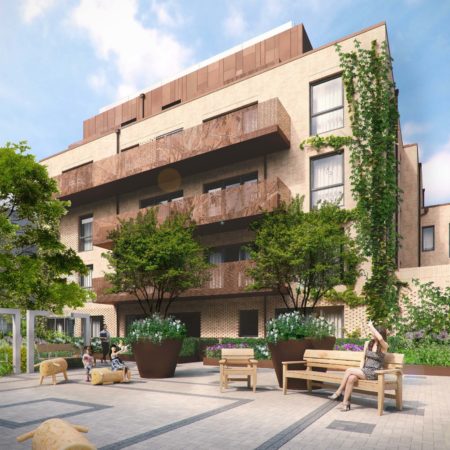Innovative Construction Brings A New Era Of Brownfield Housing Development
Local authorities in densely populated urban areas frequently face a dilemma: they need to increase the number of homes available locally for social rent while also preserving precious green spaces.
Often, the most favourable option is to develop brownfield sites. Brownfield registers show that there’s enough brownfield land to develop over one million housing units. Only just over a half of this land has planning permission in place (source CPRE).
Brownfield land is clearly an underutilised resource. It brings the opportunity to create social housing where it is needed most – in the heart of our towns and cities. But these sites can also come with significant challenges that have labelled many of them as too difficult to develop. Innovation in house building is changing that picture.
BIM modelling makes it possible to engineer clever design solutions without the lingering doubts of ‘can we actually build it?’ Coupled with Modern Methods of Construction (MMC) it also helps clarify the issues of cost and timing that are so critical for the business case.
Innovative Brownfield Housing Developments
Osborne recently created 26 flats and two townhouses for social rent for Westminster City Council. Both developments came with significant challenges that might previously have prevented development.
The flats created at Ashbridge Street came with further complications. Part of the existing building and the basement had to be retained and an outdoor living space created in this busy residential setting. With the site for the five-storey block bounded by residential properties every aspect of the demolition and construction was meticulously planned to reduce noise, dust and disruption.
Two infill terraced town houses were also created at Ashmill Street. These had to integrate into the historic street frontage within this constrained site founded on made ground.
The scheme was funded through the development and sale of 49 high-end apartments built nearby, partially over the Bakerloo Line. This design featured a reinforced frame supported on a raft foundation to protect the rail tunnels beneath.
A novel system of laminated rubber and steel vibration bearings isolates the building and residents from train noise and vibration. The fluted brick facade was created offsite complete with windows and balconies.
These new buildings demonstrate how creative thinking within a digitally-enabled development environment will open up many more brownfield sites for development.
For more information contact Richard King ([email protected]).

